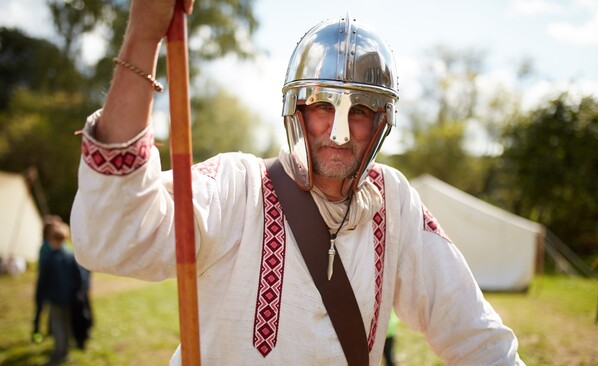
The “treasure in the bath” consists of 139 bronze coins and was found during archaeological excavations in the former fort bath.
It’s thought this fortune was hidden as a precaution: its former owner probably hid the money to keep it safe in the event of an attack by a Germanic tribe.
Coins are always especially valuable to archaeologists because they are a particularly useful means of dating finds. The youngest coin (final coin) in the treasure from the bath at Haus Bürgel can be dated to the year 388. This means the treasure could not possibly have been hidden before then (this is the “terminus post quem”).
In total, about 500 bronze coins have been found during archaeological excavations at Haus Bürgel!
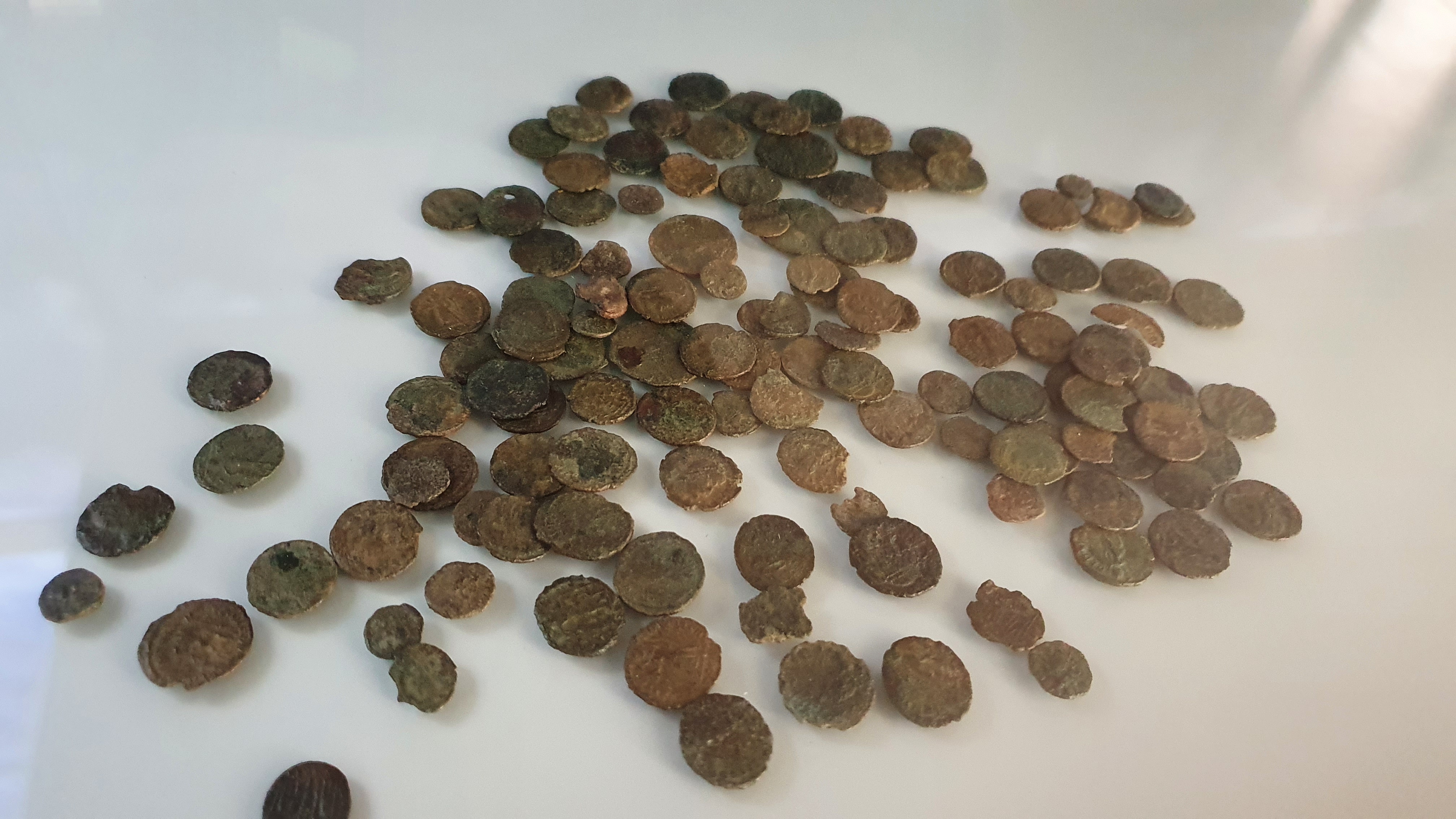
These replicas of a presumably Germanic votive stone and the bust of a lion illustrate how precious stone was as a building material at the time of the fort’s construction. Archaeologists found traces of late antique mortar on both of the originals – so they were built into the masonry of the fort itself.
The votive stone dates back to about the 2nd or 3rd century and was dedicated to the Matres. The Matres were native mother deities whose cult was widespread in the Rhineland.
They often appeared in the form of three women (mothers).
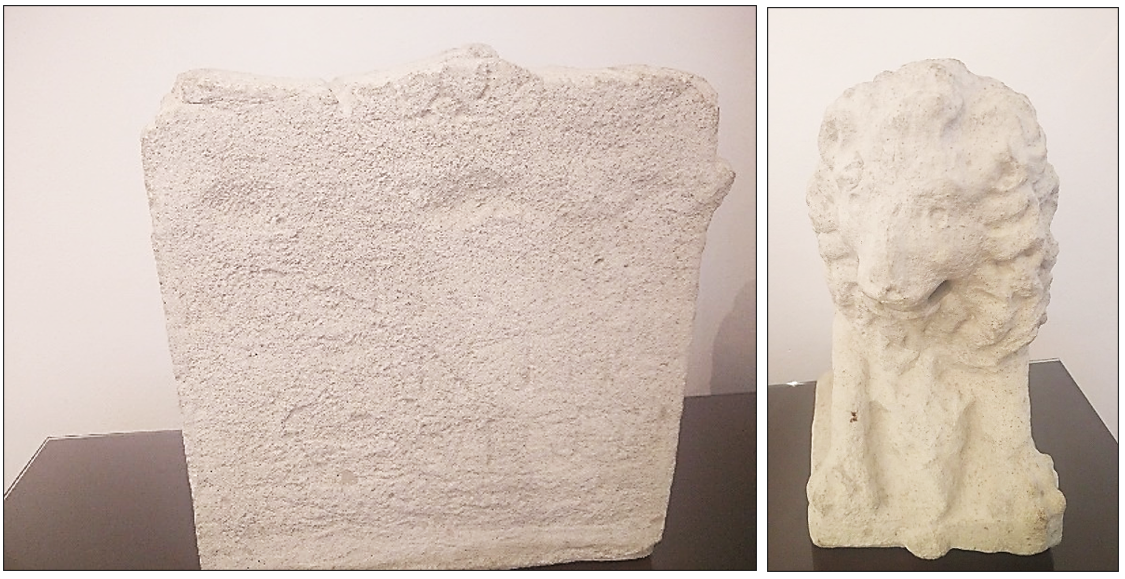
What the archaeologists have found here, of course, is not a whole shoe. The only thing that has been preserved are the iron hobnails. But these are still in their original arrangement, marking the imprint of the shoe.

Most of the finds on display here were probably originally grave goods.
Since the Romans believed in an afterlife, it was important for individuals to have enough supplies and cooking utensils, but also personal effects, placed with them in their graves, because these were essential for life in the hereafter.
At the time of burial, the jars were probably filled with wine or oil. Similar to coins, pottery is also an important dating tool for archaeologists.
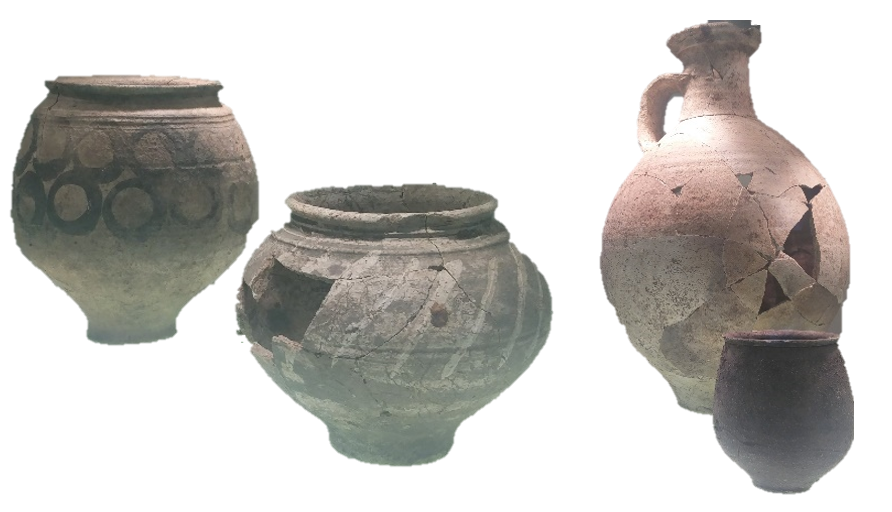
The uncovering of around ninety cremation graves just outside the former fort provided evidence that the Romans’ settlement at Haus Bürgel dated back as far as the 1st century AD.
When they died, Romans needed to be able to pay the ferryman Charon to take them across the Styx – the river that separates the world of the living from the underworld. For this purpose, a coin known as Charon’s obol – was placed under the tongue of the deceased.
Styx means “hateful” or “gloomy”. According to Hesiod, Styx was the daughter of Oceanus (the Titan who was the divine personification of a great river that flowed around the inhabited world) and Tethys (the Titan and sea goddess, sister of Oceanus).
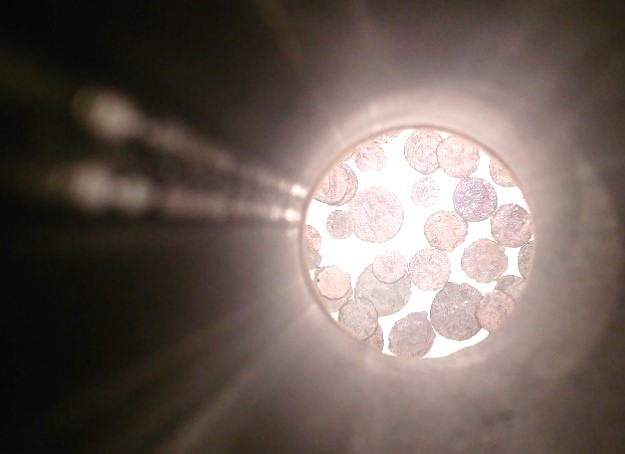
Roman soldiers settled here from the 1st century onwards. As the danger of Germanic invasions into the territory of the Roman Empire increased, a stone military fort was built in the 4th century. In the Middle Ages, the old fort was eventually converted into a Frankish castle complex, until it finally became a peaceful estate in the early modern period.
The first mention of Haus Bürgel in a document was in 1019 under the name “Castrum In Burgela” – hence its present name. From the 19th century on, Haus Bürgel was owned by the Counts of Nesselrode, until in 1989, it was acquired together with the surrounding section of Rhine floodplain by the North-Rhine Westphalia Foundation. Today, Haus Bürgel is a listed building, and its surroundings, known as the Urdenbacher Kämpe, are a protected nature reserve. The Roman Museum at Haus Bürgel opened in 2003.
All exhibits displayed in the museum were found during excavations at Haus Bürgel. There are no exhibits on loan from other museums.
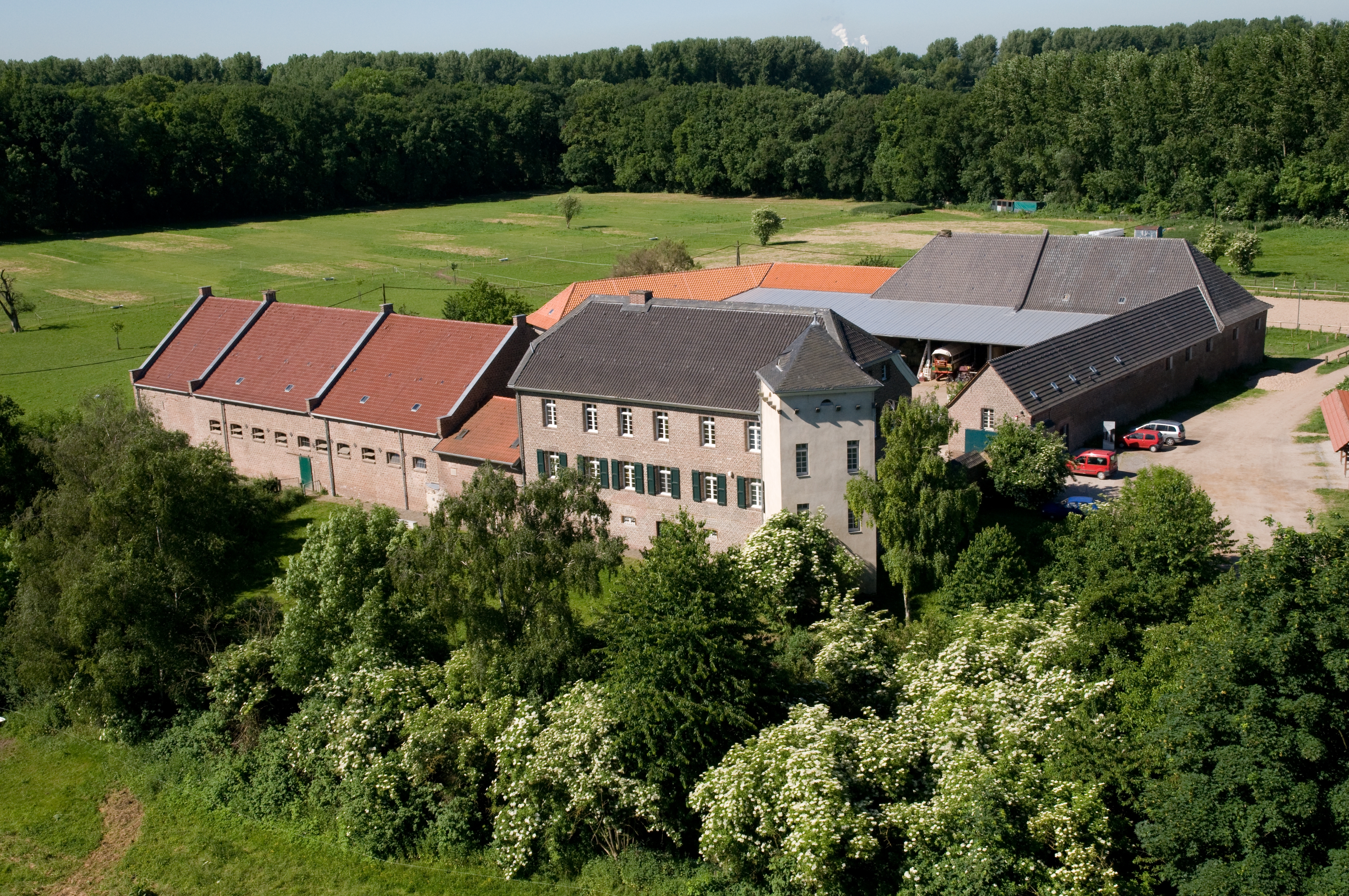
The military fort built in the early 4th century in response to increasingly frequent raids by Germanic tribes was part of the Lower Germanic Limes, the northern borderline of the Roman Empire. The Rhine served as a natural barrier between the Germanic and Roman territories, and even today (almost) all archaeological finds from border fortifications are found on the left side of the Rhine.
However, visitors who come to us today notice something odd: Haus Bürgel is located on the right bank of the Rhine – on Germanic territory!
There is a simple explanation to this apparent mystery of it being on the “wrong” side of the Rhine – back in the 4th century, the Rhine followed a different course. Actually, the fort originally stood in a bend of the Rhine on the left side of the border river. This changed, probably as a consequence of flooding, in 1374: when the water receded, locals noticed that the Rhine had sought a new bed – Haus Bürgel was now on the right-hand bank of the Rhine.
The Roman children Quintus and Laetitia know Haus Bürgel better than anyone. Maybe they will soon take you on a journey of discovery?
![externer Link [extern]](https://www.monheim.de/typo3conf/ext/website_template/Resources/Public//Images/external-link.png) >> Coloring picture of Quintus and Laetitia
>> Coloring picture of Quintus and Laetitia
![[PDF]](https://www.monheim.de/typo3conf/ext/website_template/Resources/Public//Images/2016/icn_pdf.png) >> Coloring picture of the soldier Titus
>> Coloring picture of the soldier Titus
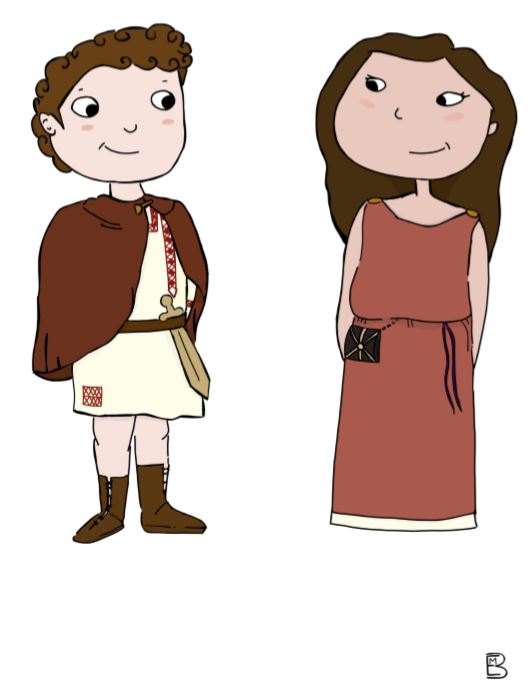
If you like making models, we’ve got the perfect activity for you – download our model kit and build your own Haus Bürgel at home!
Just print it out, cut out the house along the green edges, and then use a glue stick to glue the white folds on the roofs and walls together.
When the building is finished, it will look great on the green meadow. You will even find a few animals to color in!
![externer Link [extern]](https://www.monheim.de/typo3conf/ext/website_template/Resources/Public//Images/external-link.png) Model kit part 1: The manor house
Model kit part 1: The manor house
![externer Link [extern]](https://www.monheim.de/typo3conf/ext/website_template/Resources/Public//Images/external-link.png) Model kit part 2: Base/meadow
Model kit part 2: Base/meadow